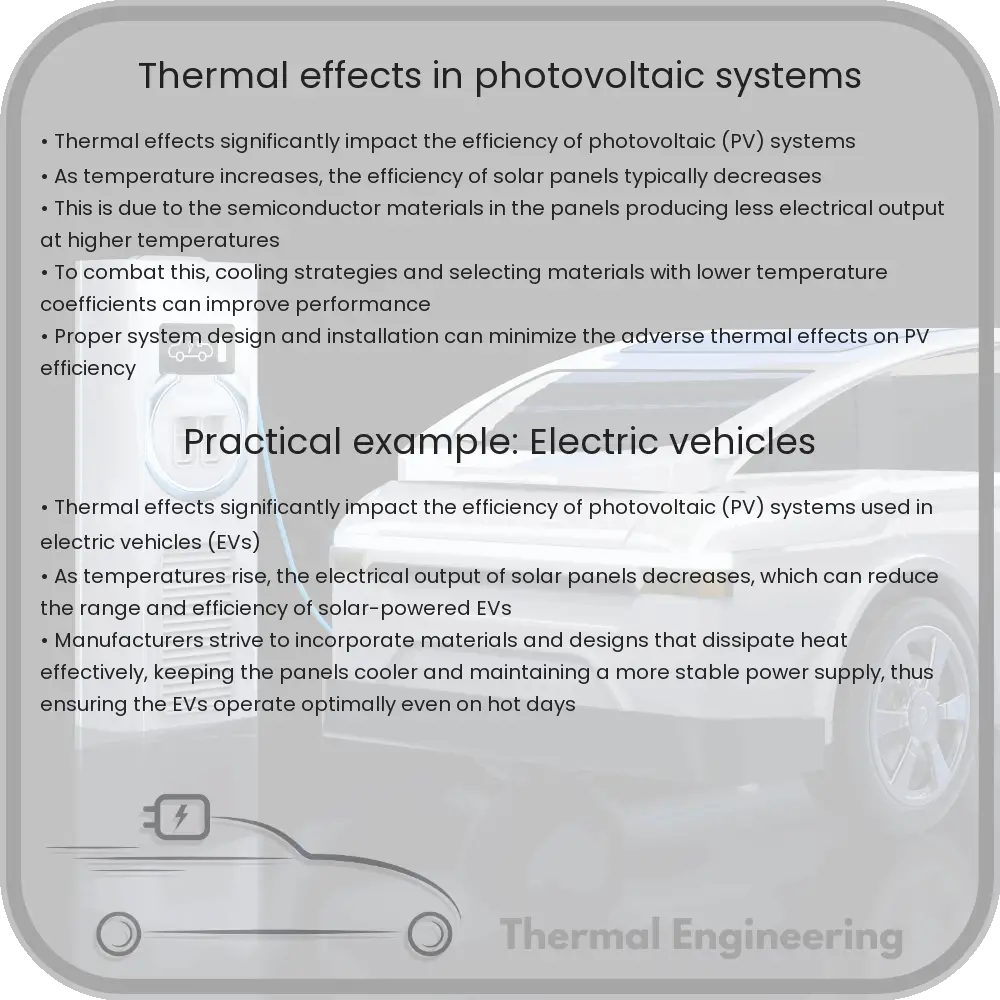Learn how temperature impacts photovoltaic system efficiency, the consequences of thermal effects on solar panels, and strategies to improve their performance.

Understanding Thermal Effects in Photovoltaic Systems
Photovoltaic (PV) systems, which convert sunlight into electricity, are a cornerstone of sustainable energy. But, like any other electrical system, they are affected by their operating environment—particularly temperature. In this article, we’ll explore how thermal effects impact the efficiency and longevity of photovoltaic systems, and what can be done to mitigate these effects.
How Temperature Affects PV Efficiency
Solar panels are rated based on their performance at standard test conditions (STC), which include a temperature of 25°C. However, actual operating conditions often exceed this temperature, leading to a decrease in efficiency. The performance of a solar cell is inversely related to its operating temperature: as the temperature rises, the efficiency generally falls.
- Semiconductor Properties: Most photovoltaic cells are made from silicon, a semiconductor whose electrical properties change with temperature. As temperature increases, the band gap of silicon decreases, leading to fewer electrons being able to jump the energy gap to produce electricity.
- Voltage Drop: Higher temperatures cause a reduction in the open-circuit voltage in solar cells. This is due to an increase in the intrinsic carrier concentration in silicon, which increases the rate of recombination of charge carriers (electrons and holes).
The decrease in performance is often quantified as the temperature coefficient, typically expressed in percentage per degree Celsius (%/°C). For silicon PV cells, the average temperature coefficient for power output is around -0.4%/°C. This means for each degree above 25°C, the efficiency of the panel may decrease by 0.4%.
Long-Term Effects of High Temperature
Continuously operating at high temperatures can also lead to accelerated aging of photovoltaic modules. This can manifest in several ways:
- Thermal Cycling: Daily temperature variations can cause components within the panel to expand and contract, leading to mechanical stresses that can eventually cause physical damage such as cell cracking or solder bond failures.
- Delamination and Discoloration: Prolonged exposure to heat can cause the encapsulant materials—used to protect cell circuits—to degrade, leading to delamination and discoloration. This not only reduces the aesthetic value of the solar panels but can also diminish their performance and lifespan.
Mitigating Thermal Effects
To ensure maximum efficiency and longevity of PV systems, several strategies can be employed:
- Proper Installation: Ensuring sufficient ventilation around PV panels can help dissipate heat more effectively. Panels should be installed with a gap between the roof and the panel, allowing for air circulation.
- Choosing the Right Materials: Some newer photovoltaic materials and technologies have lower temperature coefficients than standard silicon cells. For example, thin-film solar cells, although less efficient at room temperature, often perform better at higher temperatures relative to silicon PV cells.
- Thermal Buffering Materials: Using materials that can absorb and reradiate heat can help manage the temperature of the solar cells throughout the day.
In conclusion, while thermal effects pose significant challenges to the efficiency and durability of photovoltaic systems, understanding these influences and implementing effective mitigation strategies can greatly enhance both the performance and lifespan of solar power installations.